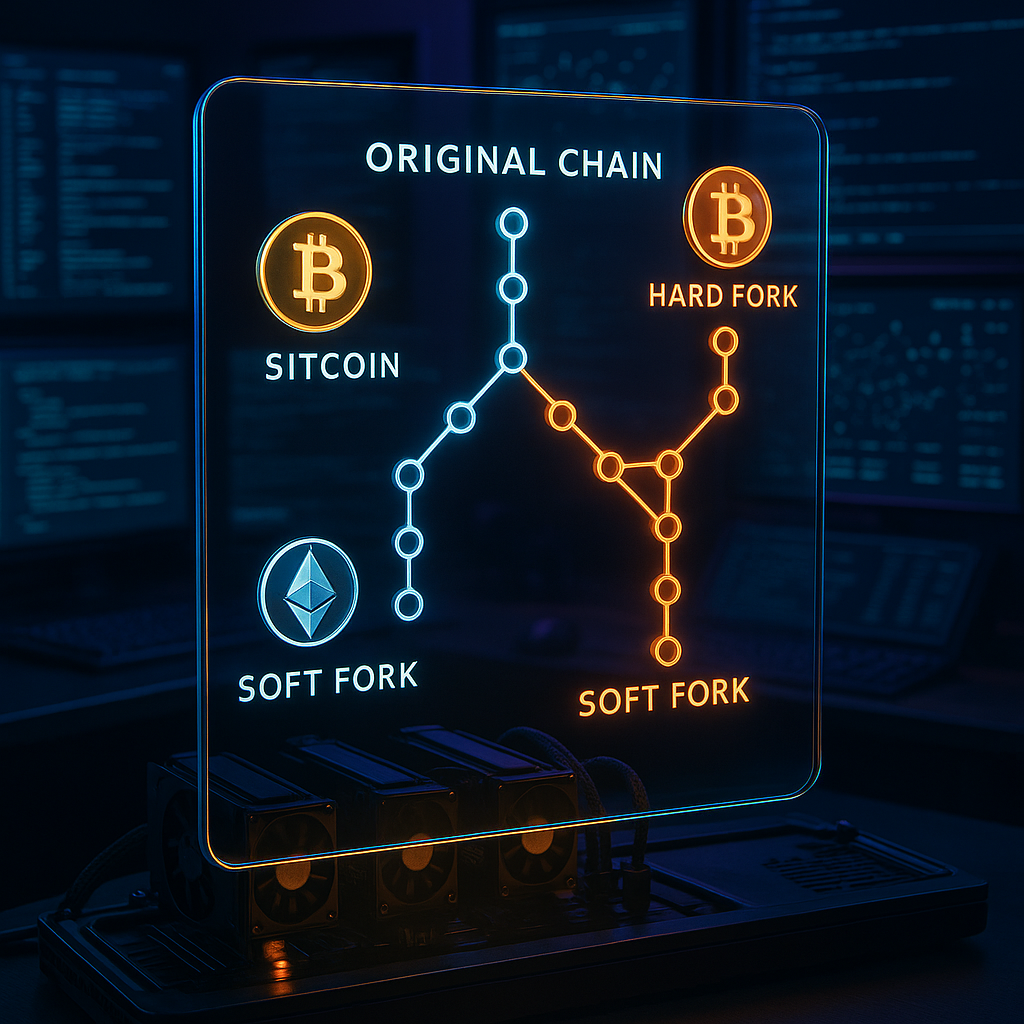Key Takeaways
- Stablecoins uphold value through diverse mechanisms. These digital assets rely on models such as fiat-backed (for example, Tether and USDC), crypto-collateralized, or algorithmic structures. Each model introduces distinctive trade-offs around stability, transparency, and risk management.
- Peg stability reflects underlying design. Centralized stablecoins like Tether and USDC maintain their pegs through fiat reserves held by regulated entities, offering a strong tie to traditional finance. In contrast, algorithmic stablecoins adjust token supply automatically via smart contracts, resulting in higher susceptibility to volatility and depegging during market stress.
- Composability accelerates DeFi innovation while compounding risk. The modular design of decentralized finance enables stablecoins to integrate effortlessly into lending, trading, and liquidity protocols. This composability rapidly advances ecosystem growth but also creates closely linked relationships that can intensify systemic disruptions.
- Interoperability expands utility but heightens exposure. Stablecoins that function seamlessly across multiple blockchains and decentralized apps increase user flexibility. However, this same interoperability broadens the attack surface and makes protocols more vulnerable to contagion if a single component fails.
- Systemic risks flow through interconnected protocols. The failure of one stablecoin or protocol can spread quickly through the DeFi ecosystem due to deep composability, highlighting the necessity for robust design, diverse collateral, and ongoing risk assessment procedures.
- Regulatory clarity offers stability and innovation constraints. Clearer regulations can enhance trust and user protection, especially for centralized stablecoins. Yet, evolving rules may also influence how flexible and composable stablecoin designs can be, impacting the pace of DeFi innovation.
By understanding these key principles, you will be well-equipped to recognize both the mechanics and the systemic opportunities and hazards that stablecoins bring to DeFi. In the sections below, we will explore how foundational projects such as Tether, USDC, and algorithmic alternatives operate within this dynamic and interconnected ecosystem.
Introduction
Stablecoins have quietly emerged as the cornerstone of decentralized finance, enabling billions in daily transactions and supporting nearly every influential DeFi protocol. Despite their surface-level promise of price stability, these assets are powered by a complex network of mechanisms, ranging from robust fiat-backed reserves to experimental algorithmic formulas. Each framework carries with it unique vulnerabilities and profound implications for composability, systemic risk, and ongoing innovation within the crypto landscape.
To participate in DeFi with clarity and confidence, it is crucial to understand how stablecoins retain their value, where their inherent risks lie, and how their interoperability shapes the wider blockchain environment. This comprehensive understanding is foundational for anyone seeking to make informed decisions in an evolving and interconnected digital economy. Next, we examine the core mechanisms behind major stablecoin varieties, differentiate their operational models, and discuss why these distinctions hold significant weight as DeFi ecosystems continue to mature.
Core Stablecoin Mechanisms
Fiat-Collateralized Models
Fiat-collateralized stablecoins provide price stability by maintaining a 1:1 peg between each digital token and a reserve of traditional currency. One of the most widely used, USDC (managed by Circle), retains its dollar peg through a tight framework of regulatory compliance, monthly attestation reports, and secure banking partnerships. Its reserves are predominantly composed of short-term U.S. Treasury bonds and cash equivalents to ensure high liquidity and transparent oversight.
Stay Sharp. Stay Ahead.
Join our Telegram Group for exclusive content, real insights,
engage with us and other members and get access to
insider updates, early news and top insights.
 Join the Group
Join the Group
On the other hand, Tether (USDT) offers a more diversified reserve portfolio. While it does include large cash reserves, Tether supplements its assets with commercial paper, precious metals, and corporate bonds. Recent years have seen a significant evolution in Tether’s reserve management practices. For example, commercial paper exposure was reduced from 65% of reserves to below 5% since 2021. This shift highlights the importance of dynamic collateral strategies that adapt to regulatory scrutiny and market conditions.
These fiat-collateralized models are often favored in sectors like traditional finance migration, e-commerce settlements, global remittances, and healthcare invoice reconciliation due to their transparent ties to real-world currencies.
Crypto-Collateralized Structures
Crypto-collateralized stablecoins provide on-chain stability by leveraging digital assets such as Ether or Bitcoin as collateral, typically requiring positions to be overcollateralized. MakerDAO’s DAI stands as the most recognized example, demanding that users lock up a minimum of $150 in crypto to generate $100 in DAI tokens. As a safeguard, the platform maintains an average collateralization ratio between 180% and 220% and employs multiple independent oracles (usually 16 to 20) for reliable price feeds.
This category has found adoption across industries that value decentralized architecture, such as online education (to guarantee transparent tuition payments), decentralized insurance (for claims reserves), and global freelance platforms (to offer borderless payroll).
Key operational metrics for these assets include:
- Average collateralization ratio: 180-220%
- Liquidation threshold: Generally 150%
- Oracle price feed redundancy: 16-20 sources
Algorithmic Stability Mechanisms
Algorithmic stablecoins take a fundamentally different approach, eschewing direct collateral in favor of autonomous, on-chain mechanisms that regulate token supply in response to market demand. Many utilize dual-token designs: one token aims to maintain price stability, while a separate token absorbs volatility and provides a balancing mechanism.
Despite innovative frameworks, algorithmic stablecoins remain highly experimental. Industry data reveals a 67% failure rate for major algorithmic models since 2021, as seen in high-profile collapses such as Terra/LUNA. These events typically occur because algorithmic adjustments cannot always react swiftly or robustly enough to violent market shocks. Sectors like high-frequency trading, marketing platforms (for dynamic coupon distribution), and dynamic pricing engines have explored algorithmic stablecoins, but systemic risk remains a significant concern.
Stablecoin Composability in DeFi Protocols
Protocol Integration Dynamics
Stablecoins are the bedrock upon which many DeFi protocols are built, enabling an intricate lattice of interconnected products and services. One of the most powerful aspects of stablecoins is their ability to trigger a multiplicative effect when used as collateral. A single stablecoin can be rehypothecated (used repeatedly across multiple platforms), resulting in layers of synthetic assets and amplified liquidity.
DeFi ecosystems benefit from this recursive liquidity, allowing for more efficient utilization of capital and development of advanced trading products.
Statistical insights reveal:
- The average stablecoin is reused 3.2 times across DeFi ecosystems
- Cross-platform lending can increase collateral efficiency up to 5x
- Each additional integration raises risk exposure by a coefficient of roughly 2.8
Beyond DeFi, similar composability is appearing in traditional finance (with tokenized currencies moving between banking and trading), healthcare data management, real-time inventory system settlements in retail, and on-demand payroll services in the gig economy.
Risk Propagation Mechanisms
While these integrations foster rapid innovation, they also form “cascade pathways” where disruptions in a single protocol can trigger widespread turbulence. For example:
- A stablecoin loses its peg, initiating primary disruption.
- This prompts mass liquidations in lending protocols.
- Automated market maker (AMM) pools experience liquidity drain.
- Complex DeFi yield strategies become destabilized across several platforms.
These risk pathways mirror those in interconnected credit markets in finance or supply chains in manufacturing, where a single point of failure can have ripple effects throughout the system. As composability increases, robust monitoring and risk mitigation systems become ever more essential.
Liquidity drain and risk propagation highlight the complexity of modern decentralized protocols and underscore the importance of technical diligence in maintaining stable operations.
Interoperable Stablecoins
Cross-Chain Infrastructure
A new generation of stablecoins leverages advanced bridge protocols and wrapper contracts to enable functionality across disparate blockchains. This interoperability allows users to transfer value seamlessly between ecosystems such as Ethereum, Solana, and Binance Smart Chain, reducing liquidity silos and enabling broader earning and investment opportunities.
However, these benefits are accompanied by new complexities:
Stay Sharp. Stay Ahead.
Join our Telegram Group for exclusive content, real insights,
engage with us and other members and get access to
insider updates, early news and top insights.
 Join the Group
Join the Group
- Maintaining bridge security adds 2-5% to operational costs
- Achieving consensus finality across chains can take 10-30 minutes
- Liquidity fragmentation is reduced by up to 45% when effective bridging networks are implemented
Similar cross-platform functionality is now being innovated in areas like global logistics (real-time payment flows), environmental science (tokenized carbon credits trading between platforms), and even government digital currencies for cross-border settlement.
Technical Implementation Challenges
The move towards interoperability is not without its challenges. Developers must address:
- Oracle delay and data latency between different blockchains
- Potential for misaligned consensus mechanisms causing transaction failures
- Vulnerabilities in smart contract bridges that can be exploited
- Limits in achieving true atomic settlement across chains
These technical hurdles mirror obstacles in global payment systems, healthcare data integration, and supply chain tracking platforms (sectors where accurate, timely, and secure data exchanges are mission-critical).
Risk mitigation strategies take on an emotional and cognitive dimension as traders and developers react to high-stakes, cross-chain environments.
Assessing Stablecoin Risks
Systemic Risk Analysis
Effective risk management for stablecoins involves evaluating both direct and indirect threats:
- Direct risk sources include fluctuations in reserve asset value, software or smart contract vulnerabilities, and risks of data oracle manipulation.
- Indirect risks stem from wider market contagion, the spiraling impact of liquidity shortfalls, and exposure spread through interconnected DeFi protocols.
This architecture of interconnected risks resembles contagion in international finance, disruptions in electrical grids, or chain reactions in supply logistics. The emphasis is on the need for sophisticated, real-time monitoring and adaptive response strategies.
Risk assessment procedures are fundamental for anyone aiming to sustain their activity within the evolving DeFi sector.
Regulatory Framework Impact
Global regulatory responses to stablecoins are diverse, creating both challenges and opportunities for asset designers and users:
- In the U.S., stablecoin issuers face requirements for banking charters and regular reserve audits
- The European Union’s MiCA regulation sets standardized operational practices and reporting obligations
- In Asia, approaches span from outright bans to progressive, regulated adoption frameworks
These evolving regulatory landscapes influence everything from asset structuring and protocol composability to compliance and user adoption. Similar trends are seen in regulated healthcare data, financial compliance platforms, and environmental asset registries, where differing regional standards require adaptable operational frameworks.
Conclusion
Stablecoins form the backbone of the decentralized finance landscape, drawing strength from a broad range of collateral and algorithmic systems. Their progression, from transparently backed fiat models to intricate on-chain and algorithmic mechanisms, illustrates a drive towards improved stability, openness, and efficiency. Alongside these benefits, new (and sometimes unexpected) layers of systemic risk continue to surface, primarily due to the expanding composability and interoperability that tightly weave protocols and assets together.
As regulatory frameworks advance and technical complexities are addressed, stablecoins will undergo rigorous tests of their operational resilience and reliability. For both newcomers and experienced market participants, gaining a well-rounded understanding of these foundational assets is vital not only for maximizing opportunities but also for navigating the evolving risks of a hyper-connected crypto economy. Those prepared to adapt, continually assess risk, and embrace responsible innovation will be best positioned to lead in the next chapter of decentralized finance and digital asset adoption—not just by reacting to change, but by anticipating and shaping it.





Leave a Reply